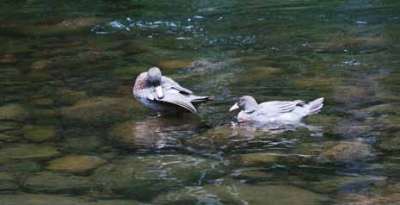Monday, 04 September 2017 12:29
Why Wetlands are Important
Wetlands are important features in the landscape that provide numerous beneficial services for people & for fish and wildlife. Some of these services, or functions, include protecting & improving water quality, providing fish & wildlife habitats, storing floodwaters and maintaining surface water flow during dry periods.
These valuable functions are the result of the unique natural characteristics of wetlands. To access more information about wetlands, please visit the Wetland Factsheet Series. At www.doc.govt.nz
Wetlands and Nature.
Wetlands are among the most productive ecosystems in the world, comparable to rain forests and coral reefs. An immense variety of species of microbes, plants, insects, amphibians, reptiles, birds, fish and mammals can be part of a wetland ecosystem. Climate, landscape shape (topology), geology and the movement and abundance of water help to determine the plants and animals that inhabit each wetland. The complex, dynamic relationships among the organisms inhabiting the wetland environment are called food webs. This is why wetlands in Texas, North Carolina and Alaska differ from one another.
Wetlands can be thought of as “biological supermarkets.” They provide great volumes of food that attract many animal species. These animals use wetlands for part of or all of their life-cycle. Dead plant leaves and stems break down in the water to form small particles of organic material called “detritus.” This enriched material feeds many small aquatic insects, shellfish and small fish that are food for larger predatory fish, reptiles, amphibians, birds and mammals.
The functions of a wetland and the values of these functions to humans depend on a complex set of relationships between the wetland and the other ecosystems in the watershed. A watershed is a geographic area in which water, sediments and dissolved materials drain from higher elevations to a common low-lying outlet or basin a point on a larger stream, lake, underlying aquifer or estuary.
Wetlands play an integral role in the ecology of the watershed. The combination of shallow water, high levels of nutrients and primary productivity is ideal for the development of organisms that form the base of the food web and feed many species of fish, amphibians, shellfish and insects. Many species of birds and mammals rely on wetlands for food, water and shelter, especially during migration and breeding. Wetlands’ microbes, plants and wildlife are part of global cycles for water, nitrogen and sulfur. Scientists now know that atmospheric maintenance may be an additional wetlands function. Wetlands store carbon within their plant communities and soil instead of releasing it to the atmosphere as carbon dioxide. Thus wetlands help to moderate global climate conditions.
Wetlands and People
Far from being useless, disease-ridden places, wetlands provide values that no other ecosystem can. These include natural water quality improvement, flood protection, shoreline erosion control, opportunities for recreation and aesthetic appreciation and natural products for our use at no cost. Protecting wetlands can protect our safety and welfare.
Environmental benefits of water quality
Wetlands improve water quality. As water moves into a wetland, the flow rate decreases, allowing particles to settle out. The many plant surfaces act as filters, absorbing solids and adding oxygen to the water. Growing plants remove nutrients and play a cleansing role that protects the downstream environments.
Flood control
Wetlands can also reduce the impacts of flooding, as they can absorb heavy rain and release water gradually. Downstream water flows and ground water levels are also maintained during periods of low rainfall. Wetlands help stabilise shorelines and riverbanks.
Wildlife habitat
Many wetland plants have specific environmental needs and are extremely vulnerable to change. Some of our endangered plant species depend totally on wetlands. Wetlands support great concentrations of bird life - far more species than a similar forest area. The survival of threatened species such as the Australasian bittern, brown teal, fernbird, marsh crake and white heron relies on remnant wetlands.
Native fish need wetlands too. Eight of New Zealand’s 27 species including inanga, short-finned eels, kokopu and bullies are found in wetlands, while the whitebait fishery depends on the spawning habitat offered by freshwater wetlands. The decline in native fish populations is directly related to massive reductions in freshwater habitat.
Published in
Issue 170
Tagged under

